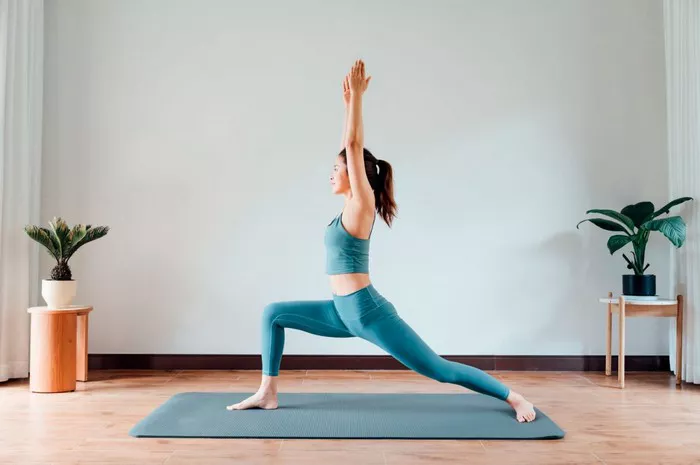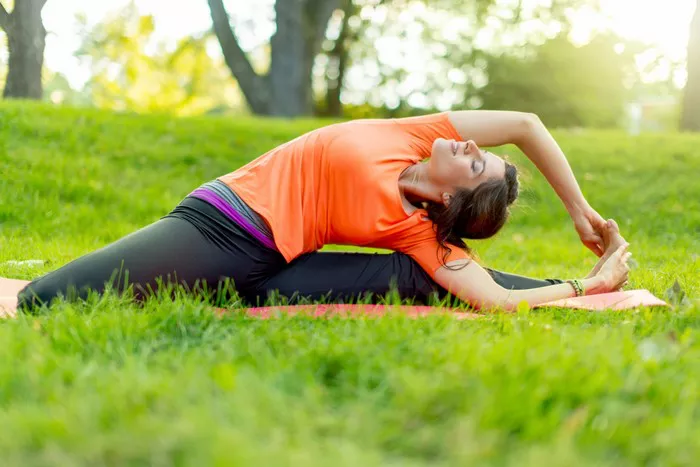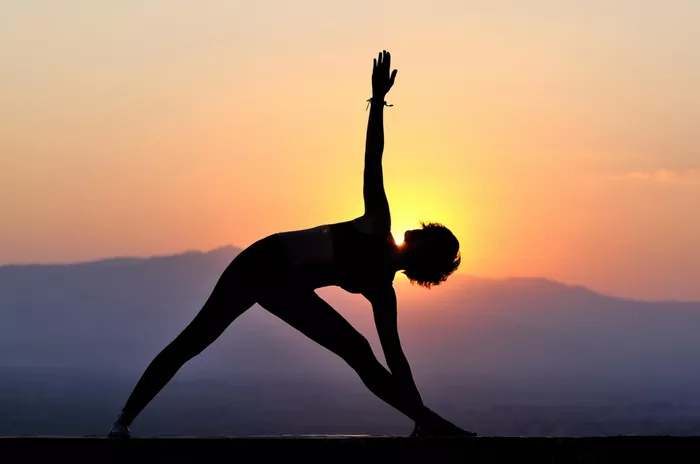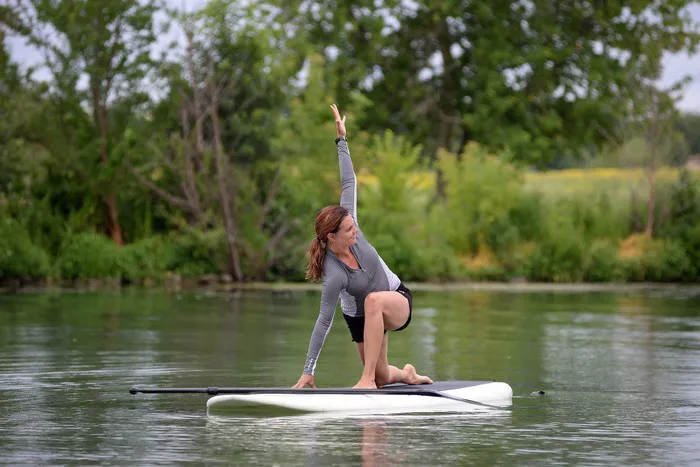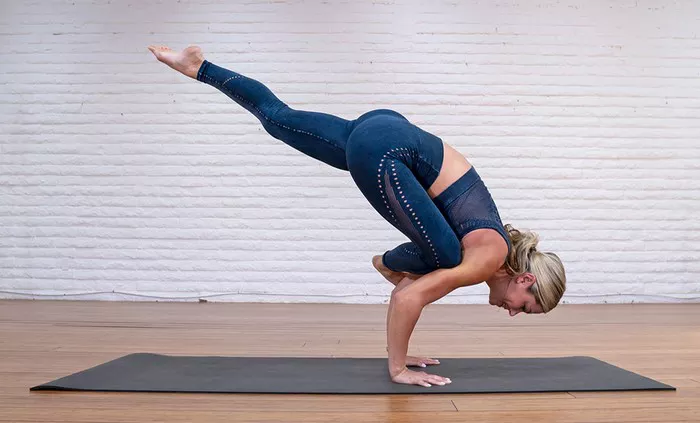Sitting yoga poses are essential for anyone looking to enhance their practice. They are great for relaxation and can help improve flexibility and posture. Sitting poses are often more accessible for beginners. They allow practitioners to focus on breathing and alignment. In this article, we will explore various sitting yoga poses, their names, and their benefits. Each pose will be detailed to help you understand how to practice them safely and effectively.
1. Sukhasana (Easy Pose)
Sukhasana, or Easy Pose, is one of the simplest sitting poses. This pose helps to calm the mind and promote relaxation. To practice Sukhasana, sit on the floor with your legs crossed. Your feet should be placed under your knees. Keep your spine straight and shoulders relaxed. Rest your hands on your knees, palms facing up or down. Close your eyes and take deep breaths. Hold this pose for several minutes. Sukhasana is excellent for meditation and can improve concentration. It stretches the hips and opens the groin.
This pose is also beneficial for those who spend long hours sitting. It can relieve tension in the lower back and promote better posture. Additionally, Sukhasana encourages mindfulness and awareness. Beginners may find it helpful to sit on a cushion or folded blanket for added comfort. This modification can ease tightness in the hips and make the pose more accessible. Over time, you may find it easier to maintain this pose for longer periods.
2. Padmasana (Lotus Pose)
Padmasana, or Lotus Pose, is a more advanced sitting posture. It is widely recognized in yoga and meditation practices. To achieve this pose, sit on the floor and cross your legs. Place your right foot on your left thigh and your left foot on your right thigh. Your knees should be resting on the ground. Keep your spine straight and your shoulders relaxed. Rest your hands in your lap or on your knees. This pose requires flexibility in the hips and knees, so take your time to ease into it.
Practicing Padmasana can bring a deep sense of tranquility. It opens the hips and strengthens the back. This pose also helps to improve circulation and digestion. If you are new to this pose, you might start with a simpler variation, like Sukhasana. Gradually work on your flexibility before attempting Padmasana fully. Remember to listen to your body and never push beyond your limits. Consistent practice will increase your flexibility over time.
3. Virasana (Hero Pose)
Virasana, or Hero Pose, is a powerful sitting posture. It stretches the thighs and improves circulation in the legs. To practice Virasana, kneel on the floor. Your knees should be together, and your feet should be slightly wider than your hips. Sit back between your feet, ensuring your weight is evenly distributed. Keep your spine straight and shoulders relaxed. Your arms can rest at your sides or in your lap. Hold this pose for several breaths, feeling the stretch in your thighs and hips.
This pose is excellent for runners or anyone with tight quadriceps. It also helps with digestion and can alleviate discomfort in the lower back. Beginners might find it challenging to sit comfortably in this position. Using a cushion or block under your hips can make it easier. Gradually, as your flexibility increases, you will find it more comfortable to hold this pose for longer durations.
4. Baddha Konasana (Bound Angle Pose)
Baddha Konasana, or Bound Angle Pose, is a wonderful sitting position. This pose opens the hips and stretches the inner thighs. To get into this pose, sit on the floor with your legs extended in front of you. Bend your knees and bring the soles of your feet together. Allow your knees to fall out to the sides. Hold your feet with your hands and sit up tall. Breathe deeply, feeling the stretch in your groin and hips. You can gently press your knees towards the ground for a deeper stretch.
Practicing Baddha Konasana regularly can help improve flexibility in the hips. It also promotes blood circulation in the pelvic region. This pose is beneficial for anyone with tight hip flexors or lower back discomfort. To enhance comfort, sit on a cushion or blanket. If you find it difficult to keep your spine straight, try leaning slightly forward. Always listen to your body and avoid forcing any movements.
5. Upavistha Konasana (Wide-Angle Seated Forward Bend)
Upavistha Konasana, or Wide-Angle Seated Forward Bend, is another excellent sitting pose. This pose stretches the inner thighs and hamstrings. To practice Upavistha Konasana, sit on the floor and spread your legs wide apart. Keep your toes flexed and your knees facing upwards. Inhale and lengthen your spine. Exhale and lean forward, reaching for your feet or the floor. Hold this position and feel the stretch in your legs and back.
This pose helps to improve flexibility and can also enhance your posture. It is a great pose for those who sit for long periods. Practicing Upavistha Konasana can relieve tension in the back and promote relaxation. If you find it hard to lean forward, use a bolster or cushion under your torso. Always maintain a straight back as you lean forward to prevent strain.
6. Ardha Padmasana (Half Lotus Pose)
Ardha Padmasana, or Half Lotus Pose, is a great introduction to the full Lotus Pose. It offers many of the same benefits while being more accessible. To practice this pose, sit with one leg crossed over the opposite thigh. The foot of the crossed leg should rest on the thigh. Keep the other leg extended. Sit up tall and relax your shoulders. Hold your hands in your lap or on your knees. Breathe deeply and maintain this position for several breaths.
Ardha Padmasana provides a good stretch for the hips and knees. It also helps with balance and focus. If you have difficulty with the full Lotus Pose, this is a wonderful alternative. It is suitable for beginners who want to build their flexibility gradually. As you become more comfortable, you may try switching legs or progressing to full Padmasana.
7. Sukha Pranayama (Easy Breathing Pose)
Sukha Pranayama, or Easy Breathing Pose, combines sitting and breathing techniques. It is an excellent way to focus on your breath. Sit comfortably with your legs crossed or in a chair. Keep your back straight and your shoulders relaxed. Rest your hands on your knees. Close your eyes and take a deep breath in through your nose. Exhale slowly through your mouth. Continue this practice, allowing your breath to become deeper and more controlled.
This pose helps to calm the mind and reduce stress. Focusing on your breath can enhance your awareness and mindfulness. It is suitable for all levels, making it an excellent addition to any yoga practice. You can practice Sukha Pranayama for a few minutes or longer, depending on your comfort level. This practice can be done anywhere, making it accessible for busy lifestyles.
8. Purna Matsyendrasana (Full Lord of the Fishes Pose)
Purna Matsyendrasana, or Full Lord of the Fishes Pose, is a seated twist that opens the spine and improves flexibility. To practice this pose, sit with your legs extended. Bend your right knee and place your right foot outside your left thigh. Keep your left leg straight. Inhale and lengthen your spine. Exhale and twist to the right, placing your left elbow on the outside of your right knee. Hold this position for several breaths before switching sides.
This pose stimulates digestion and detoxifies the organs. It also helps to relieve tension in the spine. Beginners may find it challenging to twist deeply. Always listen to your body and avoid forcing the twist. If needed, you can keep your bottom leg bent for added comfort. Practicing this pose regularly can enhance spinal flexibility and overall mobility.
9. Ganda Bherundasana (Binding the Brows Pose)
Ganda Bherundasana, or Binding the Brows Pose, is a challenging sitting posture. It requires flexibility in the legs and hips. To practice this pose, sit with your legs extended in front of you. Bend your right knee and place your foot against your left inner thigh. Bend your left knee and bring your left foot against your right thigh. Reach your arms behind you and grasp your feet. Inhale and lift your chest while keeping your spine straight.
This pose strengthens the legs and opens the hips. It also improves balance and concentration. Beginners may find this pose challenging, so practice with patience. Always focus on your breath, as it can help you relax into the position. If you cannot grasp your feet, use a strap or towel for assistance. Consistent practice will enhance your flexibility and strength over time.
See also: What Are the Benefits of Iyengar Yoga Restorative Asanas?
10. Salamba Sukhasana (Supported Easy Pose)
Salamba Sukhasana, or Supported Easy Pose, is a modified version of Sukhasana. It provides extra support for those with tight hips or lower back discomfort. To practice this pose, sit on the floor with your legs crossed. Place a cushion or block under your hips. This modification helps elevate your hips, making it easier to sit up straight. Keep your spine tall and shoulders relaxed. Rest your hands on your knees and focus on your breath.
This pose promotes relaxation and mindfulness. It is an excellent choice for meditation and gentle breathing exercises. By using support, you can find greater comfort in the pose. This makes it more accessible for beginners or those with physical limitations. Regular practice can enhance your ability to sit for longer periods without discomfort.
Conclusion
Sitting yoga poses offer numerous benefits for body and mind. They promote relaxation, improve flexibility, and enhance focus. Whether you are a beginner or an experienced practitioner, incorporating these poses into your routine can be beneficial. Start with poses that feel comfortable and gradually challenge yourself. Remember to listen to your body and enjoy the journey of your yoga practice. Each pose brings its unique advantages, contributing to overall well-being and inner peace. Embrace these sitting poses, and discover their transformative power in your life.
You Might Be Interested In

